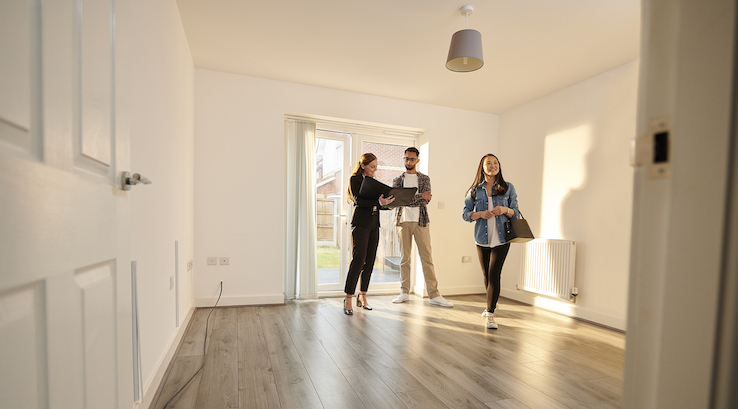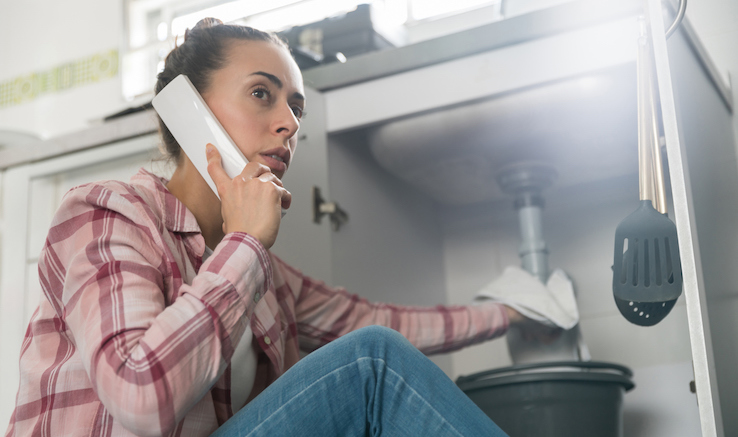
A lease agreement is a contract that allows a tenant to rent a home for a certain length of time. Each lease agreement has specific terms, or provisions, that define certain elements of the landlord-tenant relationship and the different expectations both the landlord and the renter need to follow. Lease terms can vary based on a number of factors, but there are a few basic elements that appear on just about every lease.
If you’re getting ready to rent a new home, it’s important to understand some of the common provisions that are almost always included in leases. You’ll need to follow these guidelines so you don’t violate the terms of your lease — and so you know what your landlord is required to do for you. Take a look at these common sections of a generic home lease agreement to get started.
Who Lives in the Home?

Names of All Tenants
Why It’s Important: Tenants are parties to the lease agreement. They have the legal right to live in the home, and they can each individually be held responsible for paying the rent.
Basic lease agreements have space to list out the names of all people who’ll be living in the home. On the contract, you’ll notice two terms to refer to people who live in the home. Tenants live in the home, and they’re parties to the lease contract. Tenants must pay rent, and they have other duties outlined in the lease.
Occupants live in the home like tenants. However, they don’t pay rent, and they’re not parties to the contract. Tenants are responsible for the actions of occupants, but occupants don’t have any legal obligations towards the landlord. Occupants are often children. Most landlords require that all adults living in the home list themselves as tenants on the lease. The tenants must apply to rent the home, and they may be subject to screenings, such as background checks.
Even in a case where there are many tenants on the same lease, each tenant as an individual is responsible for upholding the lease agreement. If your roommates abandon you in the middle of a lease, for example, you’ll still be responsible for paying the rent in full each month if you’re listed as a tenant on the lease.
Occupancy Limits
Why It’s Important: The landlord has the right to know who will live in the home. The number of people in the home, even if they’re not all tenants, must follow all local laws.
Leases also have occupancy clauses that determine how many people are allowed to live in the home. These exist to keep more than the safe number of people, as determined by local ordinances, from living in the home.
As part of the occupancy clause, many leases list a limited number of consecutive days that a houseguest is allowed to stay on the property without being listed as a tenant. As a tenant, you don’t have the right to let people move into the home without the landlord’s permission. You cannot acquire a new roommate — also known as subleasing — after you’ve signed the lease without notifying your landlord.
In most cases, a landlord will insist that all parties, including all potential new tenants, sign a new lease before any additional adults can move into the property. The new tenants will need to sign the new lease, apply to rent the property and go through the same screening process that you did.
How Will You Pay Rent?

Lease Term Length
Why It’s Important: The tenant is expected to pay rent for the entire term of the lease, even if they move out before then.
A lease has a clearly defined term — the length of time that the contract lasts. As a renter, you can stay in the property as long as you continue to pay rent for the entire term listed in the agreement (and as long as you don’t violate other agreements in the lease). Most lease terms last for one year. At the end of the term, the landlord and tenant can decide to renew the lease. You might also see wording that explains the process to follow if you or your landlord want to end the lease agreement sooner than the term’s end date. If you leave a home before the end of the lease, you may be responsible for paying the remaining rent.
Rent Details
Why It’s Important: This section explains how much rent you’ll owe each month and how you’ll pay it.
Basic lease contracts also list the amount of rent due each month and the day of the month that rent is due. This section of the lease protects your rights because landlords aren’t able to raise the rent in the middle of the lease. If you make your rent payment past the due date, you may need to pay an additional late fee. Each lease explains the methods of payment that the landlord will accept. Pay attention to this information. If the lease says you need to pay via a check, for example, you can’t expect the landlord to accept a Venmo transfer.
Deposit Information
Why It’s Important: This is the amount of money you’ll need to pay before you can move into the home.
In addition to monthly rent, a tenant is also responsible for paying a deposit. Usually, the deposit is equivalent to one or two months’ rent. You pay the deposit before moving into the property, and the landlord holds that money in a trust account for the length of your lease. When you move, the landlord assesses any damage to the home. If the home needs repairs or extensive cleaning that go beyond normal wear and tear, the landlord uses your deposit to pay for these expenses. When your lease is up and you’ve moved out, the landlord returns any remaining money to you with documentation of the way they used the deposit money.
Pet Fees
Why It’s Important: Fees are often non-refundable, and you’ll need to pay them before you move in.
There may be additional deposits and fees specific to the property and the agreement between the tenant and the landlord. For example, many landlords charge an additional fee or deposit for tenants who have pets. In some cases where utilities are included as part of the rent, there may be a fee or deposit associated with establishing utility accounts on behalf of the tenant. Deposits may be refundable, but fees, such as the application fee, are never refundable.
What Happens When Something Goes Wrong?

Repairs and Maintenance
Why It’s Important: Tenants have a responsibility to speak up when something goes wrong in the home. You need to know who to report these issues to.
Other parts of a lease explain how responsibilities for maintenance of the home are divided between the tenant and the landlord. Who replaces a burnt-out light bulb? Who handles plumbing problems? Who mows the grass? The lease should explain all these types of details, as long as they’re relevant to the home. Tenants also have a duty to avoid behaviors such as hoarding that could damage the home.
While the landlord is responsible for making necessary repairs to the home, especially if the damage impacts the tenant’s ability to live comfortably, the tenant has a duty to notify the landlord when repairs are needed. A lease agreement should outline exactly how and when you should notify your landlord of any maintenance problems. As a tenant, you don’t have the right to decide how a home is repaired. Some tenants lose some of their deposit money because they make the wrong choice to perform seemingly minor repairs on their own rather than notifying the landlord of an issue.
These are some of the most common provisions of a generic lease agreement. Each individual lease is a contract between two parties, so the lease you sign may include other clauses that are important for you to understand. Be sure to read a lease thoroughly before signing it and paying your deposit.





